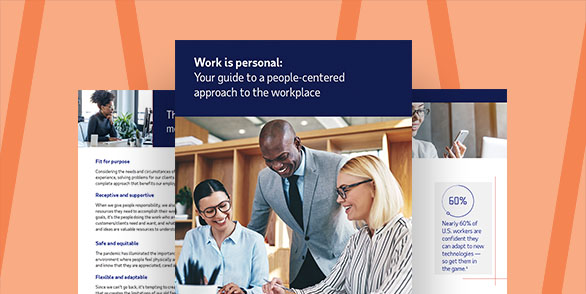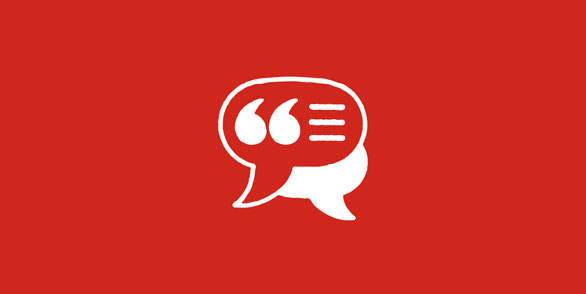In competitive markets, the businesses that often succeed are those that prioritize their people. Hiring the best candidates is the core of this approach, but it is only the beginning. Employers must also assemble dynamic teams, inspire positive workplace cultures and encourage employee engagement. Achieving such goals doesn’t happen accidentally. It takes a comprehensive plan, aided by talent management solutions, to place employees in the roles best suited to their strengths and interests, thereby maximizing their job satisfaction and productivity. Many HR experts call this tactic people strategy.
Table of Contents
What is people strategy?
People strategy is how businesses help employees recognize and reach their full potential as individuals and as part of a successful team. It involves understanding what motivates employees, helping them discover and apply their strengths, and allowing them to develop their skills so they can work and lead more effectively.
People strategy framework
A workplace that puts its people first usually has these hallmarks:
- Fit for purpose
People strategies should emphasize the employee experience and help employers make sound business decisions. - Receptive and supportive
Employee insights, concerns and ideas are valuable resources to understand and incorporate into how work gets done. - Safe and equitable
Employers must create a work environment where people feel physically and psychologically safe and know they are appreciated, cared about and treated fairly. - Flexible and future-proof
Workplaces should adapt to the changing circumstances and needs of employees, customers and business environments. - Increasingly intelligent
Collecting the right data, at the right time can help employers assess and improve conditions on an ongoing basis.
Why do businesses need a people strategy?
People management can be impacted by worker availability, the economy, the environment and government policies. Businesses don’t control these factors directly, so they may be tempted to wait until something happens before responding. The results are usually less than desirable and money, time and resources may be wasted.
Rather than be reactive, employers can create a people strategy, which may give them greater ability to meet their current and future talent needs, as well as improve their bottom line. Even if circumstances change faster than expected, employers can still achieve positive outcomes by:
- Gathering the most relevant and accurate information available
- Understanding what the data means
- Looking at possible scenarios to discover what’s likely and why
- Testing possible actions to uncover what their effects could be
How to write a people strategy that works
People strategies span talent acquisition, new hire onboarding, employee development, succession planning, employee engagement and turnover reduction. Employers may not have expertise in all these areas, which is why many partner with talent consultants or people strategists. These professionals use data-driven insights and best practices to identify talent-related goals, priorities and initiatives. They may also provide training on relevant topics, like leadership, team building and emotional intelligence.
How to implement people strategies
People strategies, much like any other business strategy, are unique to each organization. However, some phases of implementation are common across companies, including hiring and onboarding top talent, training and developing employees, creating an engaging workplace culture, and using workforce data effectively.
Hire the right people
Hiring the best employees requires patience, careful analysis and a thorough understanding of business needs. Managers lacking in any of these competencies may need training so they know what to look for in a candidate. Another helpful tactic is to gauge a candidate’s abilities by presenting them with the types of problems they will be tasked to solve if hired.
Prioritize onboarding
Onboarding helps new hires master their roles, establish relationships and understand the overall business goals. An important part of this process is modeling. Leaders must exemplify the organizational values they hope new hires will emulate if they want to create a cohesive workplace environment.
Offer relevant training courses
Employers should provide employees with training programs applicable to both their professional roles and personal priorities. The courses must also be readily accessible. Having best-in-class educational material won’t retain workers if they struggle to find and complete it.
Foster a positive culture
The backbone of workplace culture is good, responsible management and competitive compensation. Yet, too often, companies base their reputations on perks, like discounted gym memberships or meals. They fail to realize that the reason people leave their jobs is usually because of an unsupportive manager or unfair pay, not a lack of freebies.
Make data-driven decisions
Rather than rely on general assumptions, HR leaders can use data to understand the specific reasons why people join, remain or leave their organization. They can then take corrective action, such as making compensation more competitive, creating recognition programs or offering in-demand benefits.
Corporate people strategy best practices
Designing and executing a people strategy is one thing, but doing it effectively is another. Here are three best practices for equipping people to be their best:
1. Sync people strategy with business strategy
Many organizations today recognize the need for an evolved talent strategy – one that doesn’t just align with business goals but also drives outcomes. For example, if growth is a business objective, the people strategy should reflect the need to hire more candidates as new positions become available.
2. Deliver on hiring promises
Fulfilling promises made to job candidates – career development, flexible work hours, etc. – is essential to a successful people strategy. If a business doesn’t live up to expectations, it may experience lower productivity levels or, worse, the talented person it worked so hard to acquire will leave.
3. Track the right data
Analytics are necessary to attract top candidates, help them apply their strengths and ensure they excel. But simply having data isn’t enough. Employers must determine which metrics they truly need to advance their people strategy.
People strategy example
As an example, an apparel retailer was evolving its business model from that of a simple clothing supplier to one that gives its customers a truly service-based experience. To complete this transformation, the company’s leadership knew it would need a new breed of associates and managers. They subsequently implemented a people strategy that proceeded as follows:
- Behavioral assessment and applicant tracking tools helped the retailer hire the right candidates.
- Comprehensive training programs enabled a service-based approach to educating new recruits.
- Performance data gave managers the insights they needed to make smarter personnel decisions.
- Localized data helped managers offer more relevant career paths to employees.
Frequently asked questions about HR people strategy
What is in a people strategy?
A people strategy outlines an organization’s talent goals, priorities and initiatives for helping its employees perform their best. It includes tactics for HR functions, like recruitment marketing, talent acquisition, new hire onboarding, employee development, employee engagement, turnover reduction and succession planning.
What is the difference between a people strategy and an HR strategy?
Modern HR strategy encompasses company culture, employee engagement, employee wellness, corporate responsibility, employer brand and compliance. People strategy is a subset of HR strategy that more narrowly focuses on talent acquisition, activation and employee retention.
What are the pillars of people strategy?
People strategy is generally comprised of three pillars spanning the employee lifecycle – acquisition, engagement and retention.
- Acquire – Find and hire the best candidate for any position.
- Engage – Keep employees engaged with onboarding and development programs that help people grow and feel valued.
- Retain – Use best practices and data-driven insights to help improve the employee experience and retain talent for the long term.
This article is intended to be used as a starting point in analyzing people strategy and is not a comprehensive resource of requirements. It offers practical information concerning the subject matter and is provided with the understanding that ADP is not rendering legal or tax advice or other professional services.





